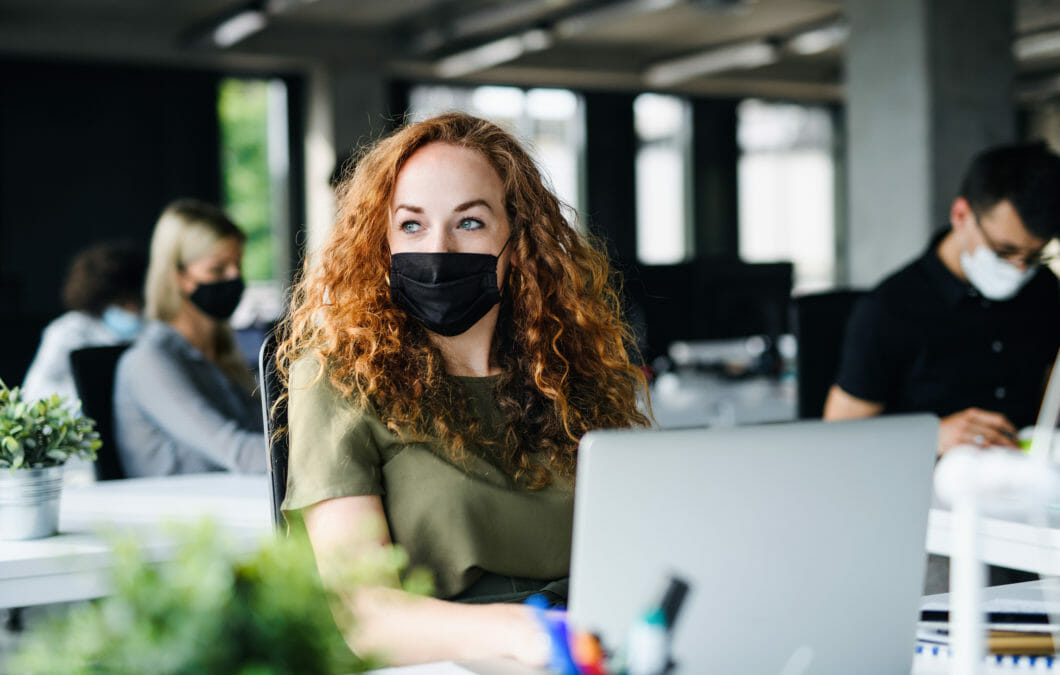For almost six months now office buildings across the UK have been empty in response to the countrywide lockdown. Businesses and employees have set up virtual offices and adjust to working from home. As lockdown rules now begin to ease, offices are springing back to life. However, are bosses ready to get back to office work?
While employees will be looking forward to returning to the new ‘normality’, employers need to ensure everyone is coming back to a safe and clean environment. Something which may seem easy enough for a small office of ten, but what about offices with over a thousand staff, multiple floors and various meeting rooms? Not to mention they will want to make the most of the space available after three months of paying rent just for empty desks and chairs occupying the office.
From now on, employers will need to have their eye on the ball about who should be in the office at any one time, which desks and meeting rooms are used and how frequently they are cleaned between use. No simple excel spreadsheet will suffice. The safe ‘new normal’ way of working won’t be viable without advanced monitoring to ensure social distancing, hygiene and contact tracing of staff.
Digitisation accelerated by Covid-19 will change the insurance industry forever
The post-Covid-19 floor plan
Floor plans and desk layouts are the starting point to keep employees at a safe distance from each other and ensure floor space is maximised. Employers may need to allocate meeting rooms as ‘overspill’ spaces in offices. The meaning of post-Covid, using space wisely means adhering to social distancing rules and rotating staff attendance based on business requirements, which is more sophisticated than the previous policy of squeezing desks in at every possible angle.
Desks will need to keep employees one metre or more apart, or according to the latest government guidelines, while ensuring that employees are not sat face-to-face. These social distancing rules will change over time, although businesses hope the distance will reduce, there is a possible chance it will revert back to two metres in the event of a second wave.
If this is the case, businesses will need to quickly adapt desk arrangements to fit with the new guidelines and keep employees safe in the workplace. A quick change that will not happen with a drawn out floorplan. Employers need to implement a technical solution which provides Covid-safe workplace functionality, but also uses advanced workspace analytics to change floor plans from one metre to two, or back again, in an instant.
Hot or cold on ‘hot-desking’?
Prior to Covid-19 hot-desking was quickly becoming a popular way of working. With flexible coworking spaces growing, many corporate companies adopted the trend as well as working ‘pods’ and ‘phonebooths’ which sprang up around office spaces. Clearly post-Covid-19 this is more difficult to manage safely.
To ensure safety and cleanliness businesses can implement hot-desking rotas, this will allow time for deep cleaning in between uses to avoid contamination between employees. Employers may also choose to implement ‘48 hour windows’ where desks cannot be used. In order to ensure this works effectively businesses can implement a booking system to reserve desks, ensure ‘booked’ desks are socially distanced, as well as alert employees which desks are currently in the ‘48 hour’ timeout. Preferably a cloud-based system should be used so it is accessible to all employees through multiple devices i.e. mobile phones as well as work laptops.
Businesses focus on outsourcing as a Covid-19 survival strategy
Office space ‘Track & Trace’
As businesses start to re-introduce employees to the workplace they will need to ensure a smooth and safe transition. With social distancing in place, offices may not have enough space to accommodate all individuals. Employers will need to organise rotas, accessible to everyone, in order to allocate specific days to different departments.
Not only will these rotas reduce ‘overcrowding’ but they will also introduce a track and trace system throughout the workplace, allowing employers to track who was in the office on a certain day, which desk they used and who they may have come into contact with. In the unfortunate event that an employee is diagnosed with Covid-19 systems, bosses will be able to react quickly to rigorously clean the contaminated areas and notify anyone else who will then need to self-isolate.
Track and trace systems are key to keeping the workplace safe, while many may still opt for Excel spreadsheets, a more reliable and secure way would be to use cloud-based, Software-as-a-Service (SaaS) systems which automatically collect employee information and produce a downloadable report in an instance.
Returning to the workplace safely is no easy task, there are multiple factors to consider and ever-changing guidelines to comply with. Innovation is essential for businesses to tackle obstacles more effectively, while ensuring that the office is a clean and safe place to work.
Written by Steve Vatidis, executive chairman, Smartway2







